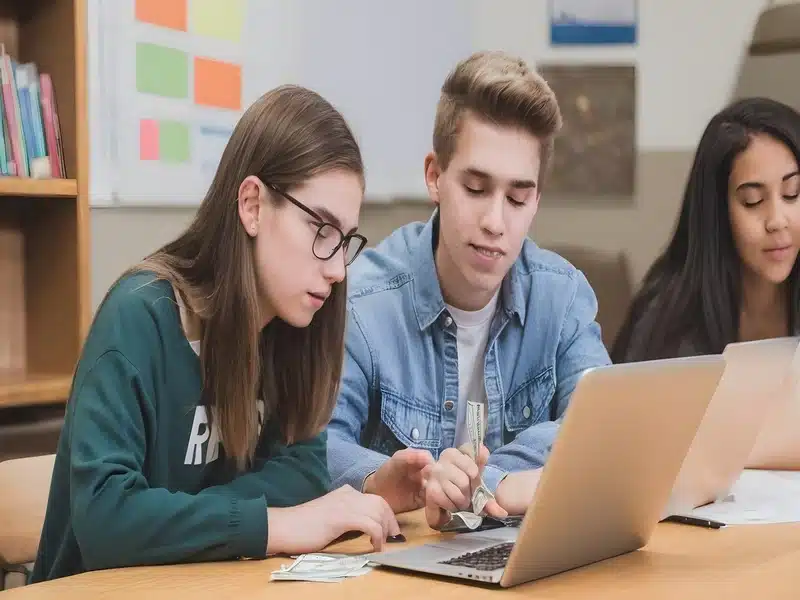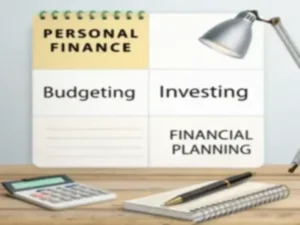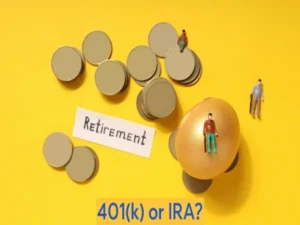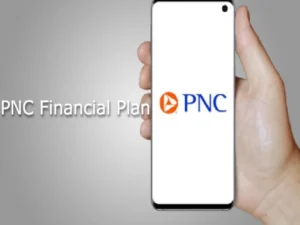In today’s world, personal finance education becomes important for individual and school students. Financial and management skills essential for implementing engaging personal finance projects can impact high school students’ financial literacy.
This guide will provide an overview of the wide range of personal finance projects examples and ideas to implement in their classroom.
A personal finance project involves hands-on learning, immersing students in real-world financial tasks and decision-making. The goal is to develop practical money management skills that prepare them for responsible financial choices in adulthood.
Project-based learning injects life into mundane financial concepts by immersing students in interactive simulations mirroring real-world adult financial scenarios. These projects involve creating budgets, comparing insurance plans, devising investment strategies, calculating taxes, and instilling responsible spending habits. Students gain practical knowledge of financial concepts through these engaging exercises, fostering the skills needed for sound and reliable financial decision-making.
What is Finance?
Finance is a field that deals with the management of money and investments. It encompasses budgeting, saving, borrowing, investing, and managing risks. In essence, finance involves deciding how to allocate resources, whether for individuals, businesses, or governments, to achieve financial goals and maximize wealth.
It also includes studying financial markets, institutions, and instruments and understanding concepts like interest rates, inflation, and financial regulations.
Finance plays a crucial role in the economy by smoothing the flow of funds and helping individuals and organizations make informed financial decisions.
Read also: Finance vs Banking: Difference Between Finance and Banking
What are the Benefits of Implementing Personal Finance Project
Beyond concrete money management skills, personal finance projects offer many additional benefits to middle and high school students:
Critical Thinking: Students learn to analyze financial situations, make informed decisions, and solve real-world problems, enhancing their critical thinking skills.
Financial Literacy: Students develop a deeper understanding of financial concepts and terminology by engaging in hands-on projects, improving their overall financial literacy.
Empowerment: Personal finance projects empower students to take control of their financial futures, instilling a sense of independence and confidence in their ability to manage money effectively.
Collaboration: Group projects foster teamwork and collaboration, teaching students how to work effectively with others to achieve common goals.
Life Skills: Beyond financial concepts, students learn important life skills like goal setting, communication, organization, and problem-solving through personal finance projects.
Long-Term Impact: The knowledge and skills gained from personal finance projects have a lasting impact, preparing students to make sound financial decisions.
Community Engagement: Projects involving community outreach or service provide students with opportunities to give back and positively impact their communities.
Career Readiness: Personal finance projects can also help students develop valuable skills in the workplace, such as budgeting, financial analysis, and communication.
Financial Responsibility: By engaging in projects that require them to manage money responsibly. Students can develop financial responsibility and learn the importance of living within their means.
Implementing personal finance projects in middle and high school settings offers numerous benefits. It is beyond just financial knowledge, helping prepare students for success in their personal and professional lives.
Read also: How to Calculate Math of Personal Finance?
Best 10 Personal Finance Project Examples and Ideas
Do you want to introduce the personal finance project to your students? Check the finance project for high school students. I find fun and interesting personal finance projects examples that other educators can use.
It would be helpful to highlight them in this article. Students can use financial literacy in the class of these projects, mainly at home, if they do not have a fit class.
Below, you will find 10 actual personal finance projects examples and ideas from real classrooms and high schools that have not been done before.
- Budgeting Boot camp: Teach students how to create a budget for themselves. Provide scenarios with different income levels and expenses like rent, groceries, and entertainment. Have students track their spending and adjust their budgets accordingly. This project helps students understand the importance of budgeting and managing money wisely.
- Investment Adventure: Introduce students to investing by creating a simulated investment portfolio. They can research stocks, bonds, and mutual funds and track their performance. This project teaches students about investment strategies, risk management, and the power of compound interest.
- Financial Goal Setting: Guide students in setting their short-term and long-term financial goals. Whether saving for college, buying a car, or starting a business, students will learn how to develop a plan to achieve their goals. This project instills the importance of goal setting and financial planning.
- Credit Card Challenge: Help students understand the responsibilities and risks associated with credit cards. Have them research different credit card options, learn about interest rates and fees, and create a plan for using credit responsibly. This project promotes financial literacy and helps students make informed credit decisions.
- Entrepreneurship Expedition: Encourage students to explore their entrepreneurial spirit by creating a business plan for a startup venture. They can brainstorm business ideas, conduct market research, develop marketing strategies, and create financial projections. This project fosters creativity, critical thinking, and business acumen.
- Savings Simulation: Create a simulation where students have to save for a specific financial goal, such as a vacation or a major purchase. They’ll learn to set aside money regularly, prioritize spending, and make sacrifices to reach their savings goals. This project teaches the importance of disciplined saving habits.
- Real-Life Money Management: Assign students real-life financial tasks, like comparing insurance quotes, understanding tax forms, or researching student loans. This hands-on approach gives students practical experience with everyday financial decisions. They’ll develop essential money management skills that apply to their lives.
- Personal Finance Podcast: Have students create personal finance podcast episodes on budgeting, investing, or credit management. They’ll research, script, and record episodes to share with their peers. This project enhances communication skills while promoting financial literacy among students.
- Community Financial Education Event: Organize a financial education event with local organizations or businesses. Students can plan workshops, presentations, or budgeting, saving, and investing activities. This project educates students and benefits the wider community by promoting financial literacy.
- Financial Literacy Fair: Host a financial literacy fair where students can showcase their knowledge and projects to their peers and the community. They can create interactive booths, games, or presentations on various personal finance topics. This event raises awareness about financial literacy and engages students in a fun and educational way.
These personal finance projects ideas provide practical, hands-on learning experiences that empower students to make informed financial decisions and prepare for their financial futures.
I hope these personal finance project examples inspired you.
Read also: What Qualifications Need for Public Finance Investment Banking Job.
Top 10 Creative Personal Finance Projects for Students
Here are the top 10 personal finance projects for Students
Financial independence Project
In this project, students prepare to live independently after school. They get a hypothetical income, find an apartment, look up utility costs, and budget for groceries and transportation. They make decisions based on their income to manage their expenses wisely.
Saving and Budgeting projects
Budgeting and saving projects show students how to track their income and expenses and distinguish between needs and wants. They make monthly budgets based on realistic incomes. Students open simulated bank accounts to learn about saving and calculate the interest they’ll earn over time.
Investing Projects
Investing projects teach students about market basics such as stocks, bonds, mutual funds, compound interest, and risk tolerance. They research companies, choose stocks, monitor their values, and create diversified portfolios to gain hands-on experience with investing.
Credit & Debit Projects
Building good credit and avoiding harmful debt is crucial in personal finance education. Students explore factors affecting credit scores and compare financial products such as credit cards and loans, considering their costs and potential risks and benefits. This helps students make informed decisions and develop responsible financial habits.
Insurance Projects
In risk management lessons, students study various insurance types like health, life, auto, home, disability, and long-term care. They examine sample policies and calculate suitable coverage amounts using case studies. This helps them understand the importance of insurance and how to protect themselves financially against unforeseen events.
Tax Projects
In this project, students study common tax forms and practice filling out 1040EZ forms. They understand how income, deductions, and life choices impact tax liability. Additionally, they explore concepts like sales, property, and payroll tax to understand taxation comprehensively.
Buyer’s Remorse Project
In this project, students monitor their spending habits and classify expenses such as food, entertainment, shopping, and bills. They reflect on whether purchases were responsible or justified, leading to buyer’s remorse. This encourages thoughtful spending habits and helps students become more mindful of their financial choices.
Financial Planner Simulation
In this project, students are given a fictional client persona, like “Jeff, 28, IT Consultant.” They interview their client to gather information about their income, expenses, lifestyle, and short- and long-term money goals. Students then analyze their client’s needs and provide written financial planning recommendations tailored to their situation. This exercise helps students develop financial assessment and advisory skills, preparing them for real-world scenarios in financial planning.
My Pet Plan Project
In this project, students explore financial planning and responsibility by researching the costs associated with their dream pet. They compare pet food, supplies, veterinary care, grooming, boarding, and accessories expenses. Using this information, they create budgets to cover all the expenses associated with owning and caring for their pet. This project helps students understand the financial commitments involved in pet ownership and develop budgeting skills.
Market Day Entrepreneur Project
In this business project, students brainstorm ideas for products or services, create detailed business plans, and implement them by setting up booths and selling to their peers at a Market Day fair. This hands-on experience allows students to learn about entrepreneurship, marketing, and sales while gaining practical business skills.
Personal Finance Culminating Assignment
In this capstone project, students undertake various tasks to enhance their financial literacy. These tasks include tracking daily expenses, setting SMART financial goals, comparing checking accounts, understanding tax forms, and reflecting on their money personality and relationship with finances. Students develop practical money management skills through these activities and gain insights into their financial behaviors and attitudes.
Read also: How to Calculate Math of Personal Finance?
Final Thought
This guide only touches on many personal finance projects accessible to middle and high school students today. Educators can continually innovate and adapt projects to suit their curriculum and the needs of their learners, fostering engagement and relevance.
The fundamental concepts like budgeting, saving, investing, insurance, taxes, consumer literacy, and risk management remain constant. Hands-on learning through individual and group projects equips students with essential personal finance skills for life. Let’s empower the next generation with the knowledge and confidence to attain financial independence.
Read also: Mid Florida Finance Industry Overview







